The Hidden Costs of Plate Processing
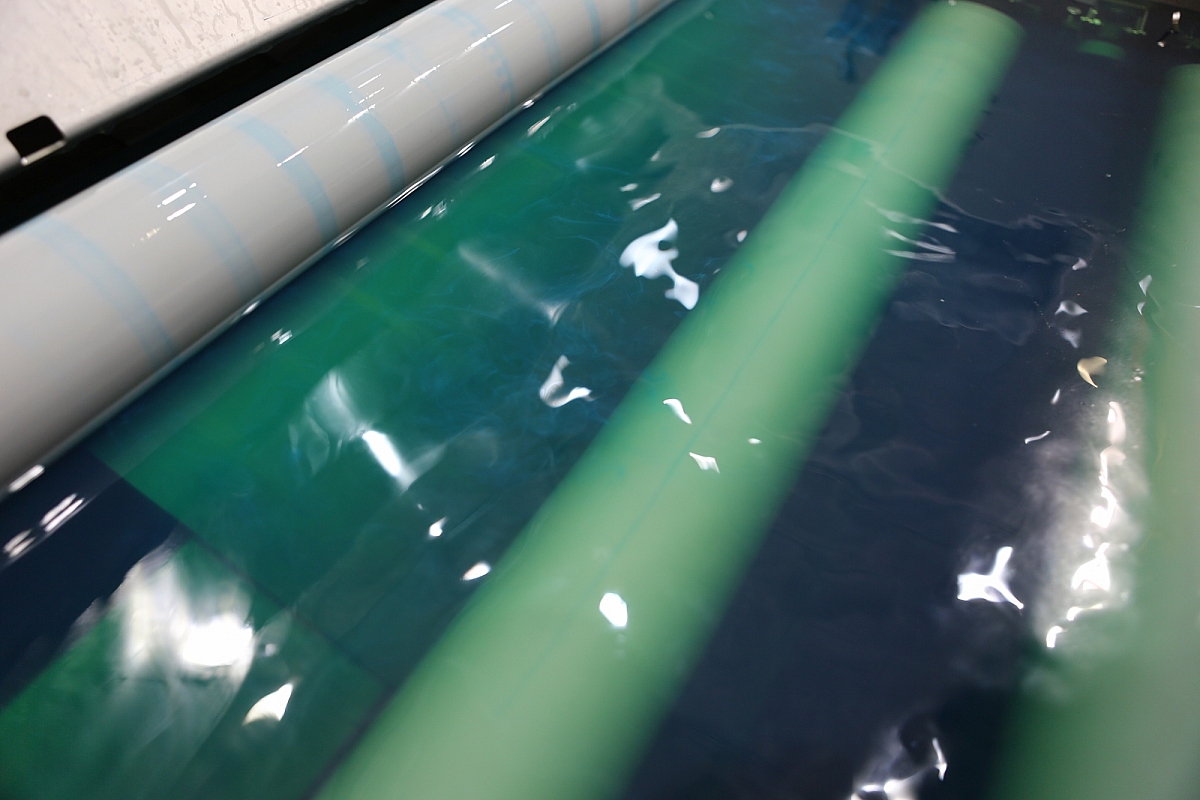
Kodak’s plate specialists have seen it all when it comes to plates, working with our customers to figure out what’s going on if their plates aren’t performing as expected. One thing they see often are problems that happen as a result of plate processing—and the time and money that’s wasted in both prepress and the pressroom dealing with these problems.
Plate processing has inherent variability and quality concerns that can affect the plate making process and introduce defects, even in the best of prepress operations. The elimination of risks associated with processing is one of the reasons that many printers are choosing to switch to KODAK SONORA Process Free Plates.
We’ve seen that when our customers are considering the switch to SONORA Plates, they easily understand the savings around not running a processor or buying chemistry and reducing water usage. However, it’s harder for them to see the “hidden costs of plate processing.” These costs include the costs of plate remakes and delays from having to remake plates. They also include press time and paper wasted if a plate makes it onto press with an undetected defect caused by plate processing. These “hidden costs” can be significant, but they’re hard to avoid without eliminating the chemistry and processor completely.
Below are a few examples of the problems we see that can be traced back to the plate processor. These examples all came from real customers that asked us for help.
Banding
The plate in this photo was taken off a yellow press unit and shows terrible banding. However, the banding wasn’t visible on the plate before it was put on press. It only appeared after ink was applied.
The cause of the banding was weak developer and, likely, forgetting to replace the replenisher bottle.
Unfortunately, since the banding wasn’t visible on the plate, this defect not only wasted press time and forced a plate remake for this particular job, any other jobs that were queued and plated after this one would have had the same issue.
IMPACT: Plate remakes would have been needed for this job and all other jobs prepared before the defect was spotted. The press would have sat idle, waiting for new plates while the entire developer bath was replaced in the processor.
Hard (old) Brush
In this photo, you can see brush marks in the non-image as well in the image area of the plate.
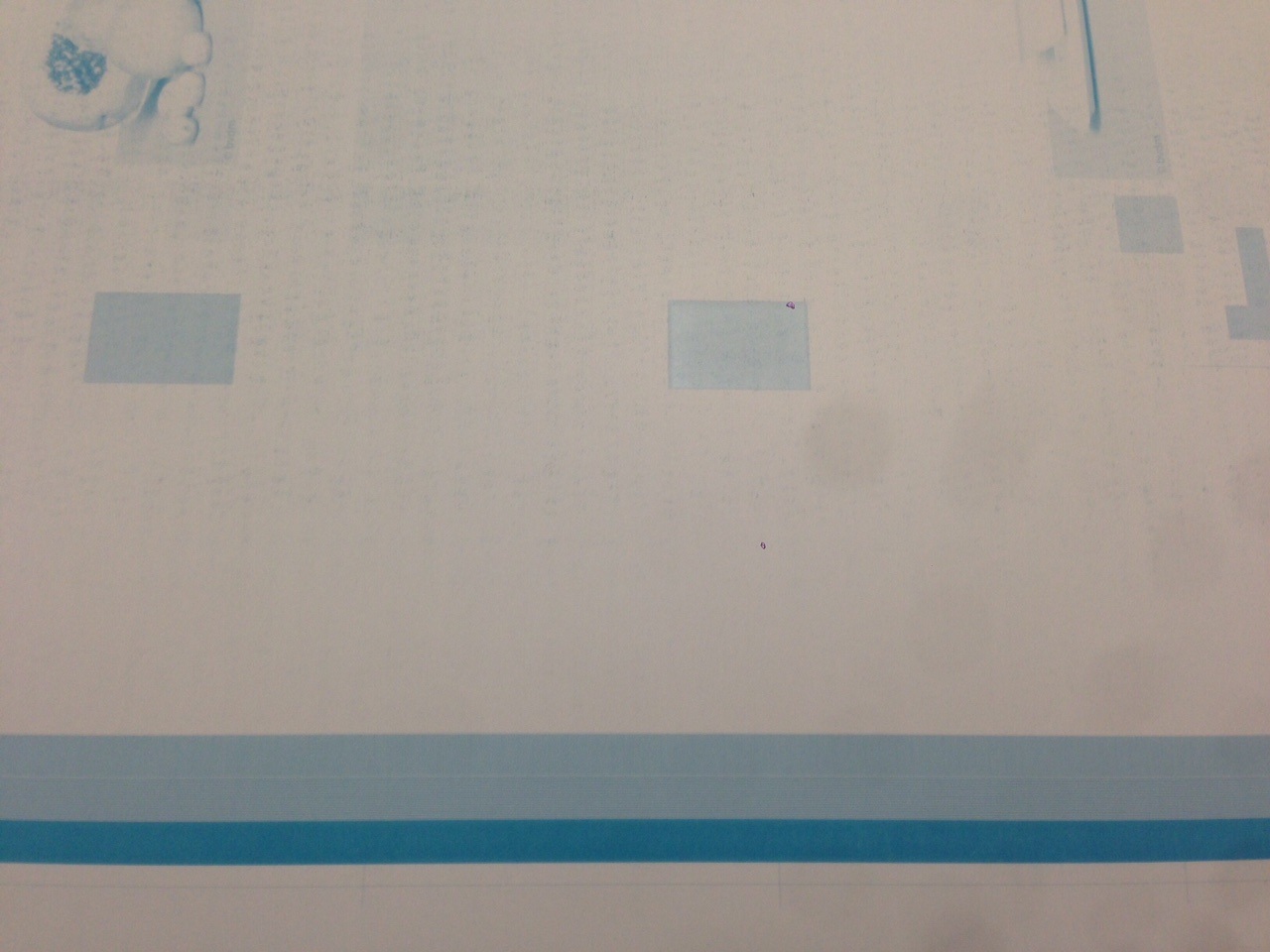

The marks were caused by not sticking to recommended brush replacement intervals. An aged brush in the plate processor became too stiff and brittle and scrubbed the plate coating back onto the substrate, leaving marks in the non-image and image area.
IMPACT: Plate remakes, but only after the brushes were replaced. The time to replace the brushes—possibly ordering new ones if no brushes were on site—could have caused a delay in the job. All too often, these types of issues go unnoticed until it causes a print issue and results in lost press utilization.
Too Much Pressure
Here you can see another common defect caused by the plate processor. There is coating damage appearing unevenly across the plate width, caused by brushes that were set with too much pressure and unevenly. This situation very often appears together with warped plate beds.
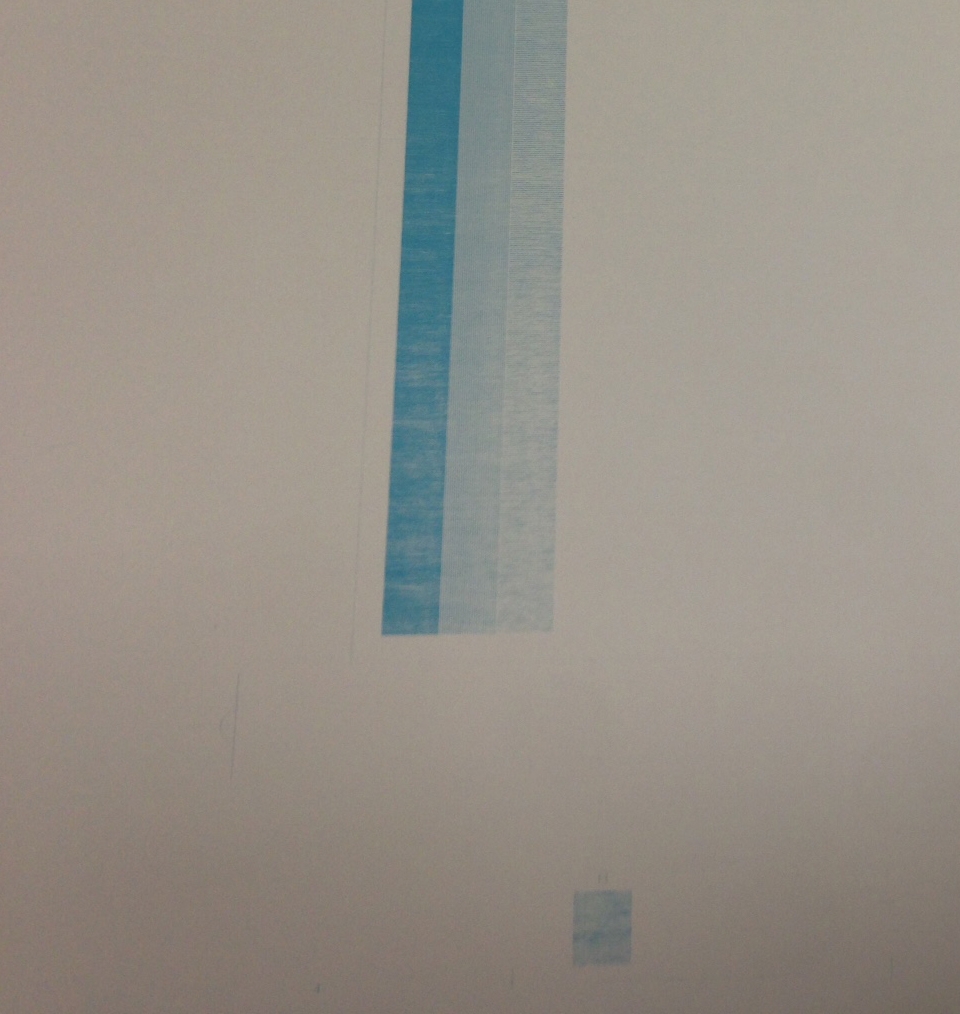
A badly set brush roller caused mechanical damage to the coating. Again, it is not uncommon for these plates to go unnoticed until they make their way on to press.
IMPACT: Plate remakes and lost press utilization.

A badly set brush roller caused mechanical damage to the coating. Again, it is not uncommon for these plates to go unnoticed until they make their way on to press.
IMPACT: Plate remakes and lost press utilization.
Developer Redeposits
This plate showed marks and stains caused by developer redeposits.
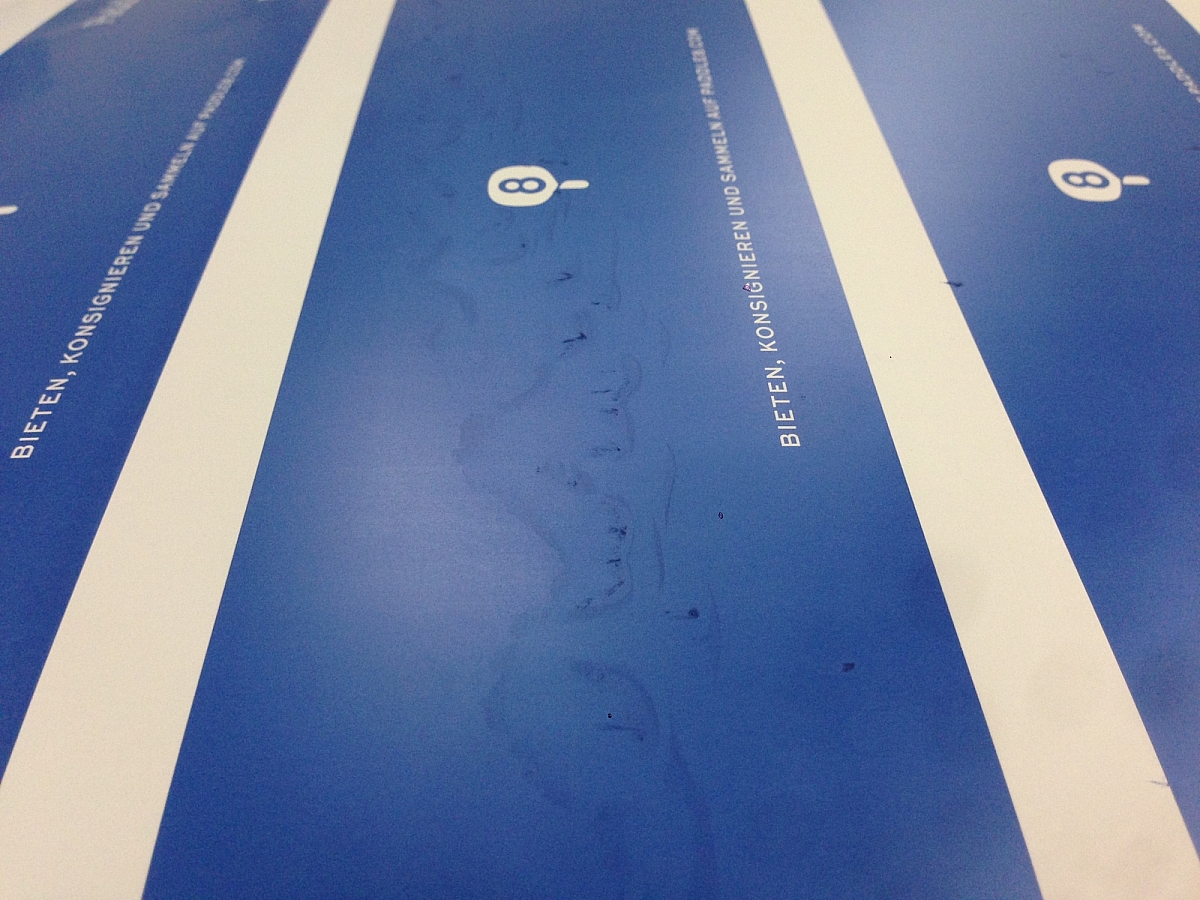
Developer Redeposits
This plate showed marks and stains caused by developer redeposits.

The developer became fully loaded with the removed plate coating and redeposited the coating back onto the plate. Infrequent developer bath cleaning or not following filter replacement intervals are the most common causes of developer redeposits. A developer circulation pump that does not circulate the developer sufficiently is also often a root cause for these kind of problems.
IMPACT: Plate remakes, at minimum. Like many other processing defects, these defects can go un-noticed until the plates go to press and the print is examined. Today’s busy prepress environments and automated plate loaders on the press have reduced the level of visual inspection of plates, and the consequence is that more of these defects make their way through to the press. In cases where plates are additionally post baked for longer runs, these redeposits cannot be removed, for example, by using a plate cleaner.
Worn or Damaged Processor Parts
As parts of the plate processor wear out, plate quality is affected.
This photo shows a developer brush from a plate processor where the brush hairs were worn out in the area of plate transport. This worn brush caused uneven developed plates and resulted in dot variations on the plate.
IMPACT: Plates going to press would give poor color uniformity and reproduction across the paper width. Any plates queued after this one would be affected also, and the processor would need a new brush and maintenance. A worn brush like this one cannot be adjusted anymore, especially if more than one plate thickness is used. This worn brush would also cause transportation issues, likely resulting in a plate crash. There would also be an impact on the printing press utilization.
In the first photo below, you can see a damaged gum face roller (before the dryer), which caused a carry-over of gum to the exit rollers, shown in the second photo. Dry residues on the roller’s surface were transferred to the plates and showed up as visible spots and blotches in the printed job.
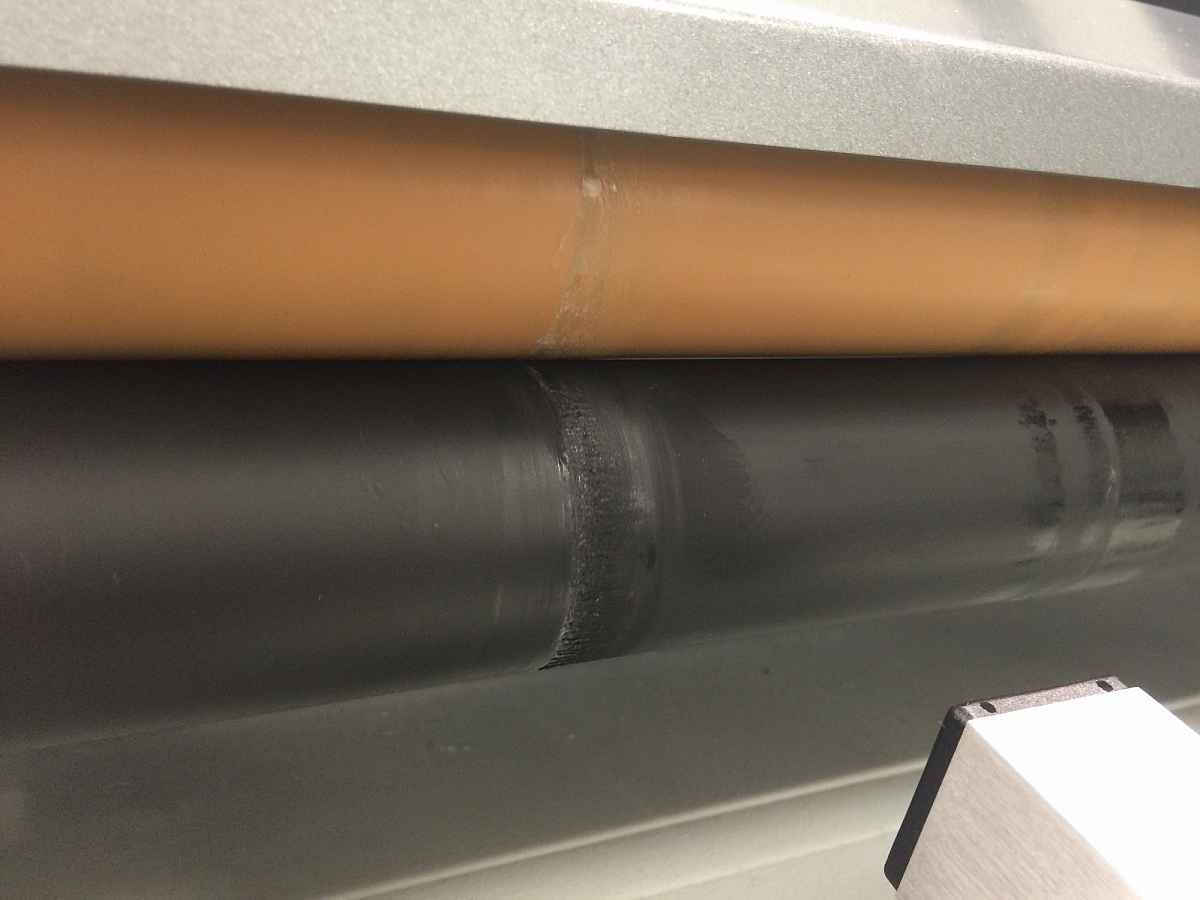
IMPACT: Plates going to press would give poor color uniformity and reproduction across the paper width. Any plates queued after this one would be affected also, and the processor would need a new brush and maintenance. A worn brush like this one cannot be adjusted anymore, especially if more than one plate thickness is used. This worn brush would also cause transportation issues, likely resulting in a plate crash. There would also be an impact on the printing press utilization.
In the first photo below, you can see a damaged gum face roller (before the dryer), which caused a carry-over of gum to the exit rollers, shown in the second photo. Dry residues on the roller’s surface were transferred to the plates and showed up as visible spots and blotches in the printed job.

All of the examples above wasted significant time, materials, and money for our customers. You can eliminate these risks by making the switch to process free. Over 4,000 customers worldwide are now using SONORA Plates, and with the new SONORA X Plates, over 80% of printers should be able to make the switch easily. Contact your Kodak sales representative to request a demo and see if SONORA Plates will work for your business.